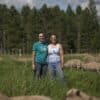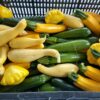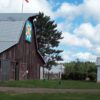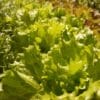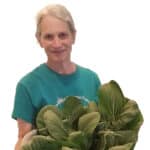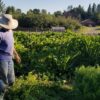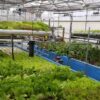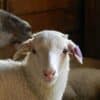Reframing Our Relationship with Winter: Renewal

“And don’t think the garden loses its ecstasy in winter. It’s quiet, but the roots are down there riotous.” ~Rumi (ancient Persian poet)
I always found the dates on the calendar when a season “started” rather funny. I mean, who gets to pick those dates? Winter doesn’t start until December 21st? Well, maybe where they live…but not up here in the Northwoods! Seasonal shifts fudge around from year-to-year, but when you’ve reached a new season on the farm, you know it—whether or not the calendar agrees with you.
With that in mind, I wondered, well, how do you know when you’re reached a new season? Here’s how we notice those shifts on the homestead:
Spring: you can smell the earth again. The mud is back, trees are budding, birds return, crocuses bloom in the yard, and the rhubarb is up.
Summer: leaves are now deep green, frosts are over (or so you hope), and strawberries ripen.
Autumn: frosts return, birds are leaving, trees turn brilliant reds and yellows, apple picking time arrives, and you start fires in the woodstove again.
Winter: days feel terribly short, snow is on the frozen ground, clouds lose their drama and flatten out, fires in the woodstove are a daily routine.
Mother Nature has had a very long time to work out the ebb and flow of the seasons. When’s the best time for growing or maturing, when to be dormant and heal. Heavens, the pumpkin seeds the squirrels plant grow better than mine! Learning to watch what nature is doing and follow her lead is called “biomimicry.” So, what can we learn through the varied Northwoods seasons from nature’s process?
Spring (mid-April to mid-June): grow, experiment, push limits, invigorate, bloom.
Summer (mid-June to mid-September): thrive, manifest, shine, go all-out.
Autumn (mid-September to late October): mature, culminate, store away, let go.
Winter (late October to mid-April): rest, regenerate, examine, plan, tend the internal.
Some years, Autumn can be two months or two weeks, while spring can seem like Mother Nature’s menopause, fluctuating from cold and cranky to hot and breezy. Summer is glorious with its long days, but followed by the hurried nature of harvest and battening down the farm before the ground freezes, finishing up the growing season with the last of the potatoes and squash in the root cellar leaves an exhausted sense of “we made it!” This is followed by five to six months of winter.
Yes, you read that right. If you do the math based on nature’s northern rhythms rather than what the calendar says, the season of “winter” in the Northwoods is nearly half the year. If you’re in an unhappy relationship with the winter experience, that means half your year (and half your life) is miserable! I think it’s time to work on that relationship!
Part of our cultural problem with winter is our obsession with productivity. Winter is a fallow time in nature’s productive cycle, so it’s seen as unhelpful or hindering. But the Northwoods needs winter in order to have spring—and oh how glorious spring is after making it through the depths of winter! Would we not appreciate it less if we simply skipped from fall to spring? And what is nature actually doing in winter, with those roots down there riotous?
In winter, Nature catches her breath. All that growing and blooming, bearing fruit and raising young is taxing. The growing season is nature’s great exhale, through which we all thrive. Winter is the great inhale. We all need to remember to inhale deeply, to re-center, to take time for healing.
We call this the process of renewal. When you reframe your relationship with winter through the lens of biomimicry, what was once abhorrent, dark, and cold months to “get through” is transformed into a canvass for renewal.
So, what brings renewal? All summer long, folks ask us at Farmstead Creamery, “When do you sleep?” and it’s not really a joke that our reply is “In winter.” Society-wide, we’ve neglected healthy sleep. With fewer chores and longer times of darkness, winter on the farm is a perfect time to catch up on much-needed rest after the rigors of the growing season.
And that’s just one place to start. Throughout this winter, I’ll be highlighting ways to include a practice of renewal into your wintering lifestyle as part of the Nordic hygge (hoo-ga) theme. As you look out at nature’s winter magic, know that not all is dead and dormant out there. Mother Nature is working on regeneration before the vibrant burst of spring. We can learn from her and build a practice of winter renewal as well. Just think, it’s like a free invitation for self-care for nearly half the year! Who would want to turn down that offer?
See you down on the farm sometime.
